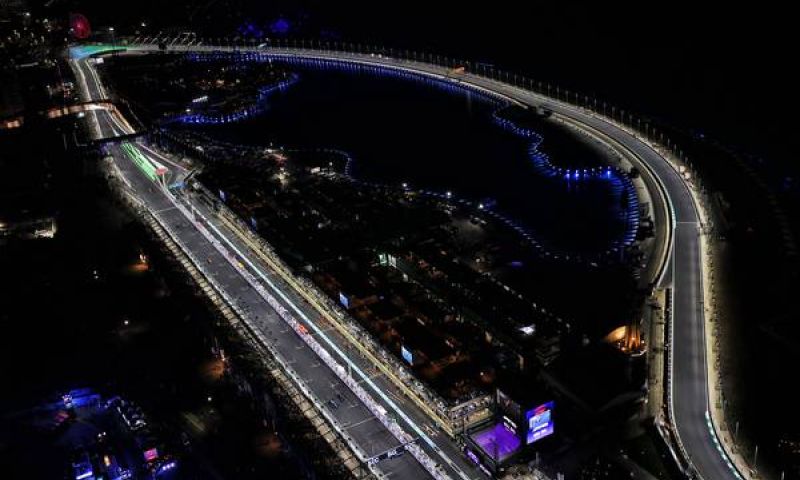Column

Analysis | Red Bull's race pace strong, Ferrari's untested.
It was Charles Leclerc in his Ferrari that topped both free practices sessions today in Saudi Arabia. It was also world champion Max Verstappen who places second in both sessions, although in FP2 he didn't manage to get a soft tyre run in due to yellow flags across his laps. While it was Leclerc's teammate Carlos Sainz that finished fourth in FP1 and third in FP2 that seemed to be just behind the top two.
Difficult decisions for teams and drivers to make
The Jeddah track is the fastest street circuit that Formula 1 visits. Average speeds in qualifying are over 250 km/h with drivers climbing above 310 km/h on three separate occasions during a single push lap. Over 80% of the lap is spent at full throttle and many of the corners can be taken flat-out given the soft angle.
With this high speed and therefore crucial DRS zones, teams have to make a more important decision in balancing the downforce levels. On most circuits around the world, the delta between a lap with all DRS zones in play and a lap with no DRS zones in use is relatively small. But in Saudi Arabia, the difference is more pronounced.
All three sectors are pretty quick, but the first is slightly slower with tighter turns. The first corner is particularly tight, and then the drivers have to flick the steering wheel in the opposite direction almost immediately to take the second corner. There are elongated chicanes throughout the circuit, this one is one of the tightest. To have better confidence in this sector, drivers might opt for a higher downforce setting on their cars. Going down this route should also help them during the Grand Prix because it would mean the tyres do less sliding and therefore should last longer.
However, in the following two sectors, having a high downforce is negative. Without DRS, it becomes difficult for the cars to dump drag and they will therefore lose time during the faster areas of the circuit. This means that during the race, when DRS isn't available regularly, a high downforce reduces performances in sectors two and three. The best sector times might allow us to identify which set-up the teams tried in the second free practice session.
| Driver | Best sector 1 | Best sector 2 | Best sector 3 |
| Charles Leclerc | 32.876 | 28.923 | 28.273 |
| Max Verstappen | 33.136 | 28.762 | 28.255 |
| Carlos Sainz | 33.020 | 28.956 | 28.340 |
| Sergio Perez | 33.237 | 28.952 | 28.171 |
| Lewis Hamilton | 33.354 | 28.904 | 28.255 |
| George Russell | 33.293 | 28.850 | 28.521 |
Tyre deg and Long runs
Pirelli has introduced a new, 18-inch wheel tyre for the 2022 season. This change brings forth a unique challenge to all of the teams, as more energy has to be expended in tyre rotation, due to the nature of the large wheels and smaller mass of rubber outside. While teams have had the two winter testing sessions and the Bahrain Grand Prix race weekend to understand them further, they still seem to be surprised as to how sharp the degradation levels are. Teams and drivers were both suggesting a three-stop strategy in the race, which proved how much performance plateaued once the tyres hit the cliff.
With this, one can assume that a similar problem occurs for the Saudi Arabian Grand Prix. With it being a tight and twisty street circuit, the demand for tyre performance will be even higher. As Bahrain’s long straights & hard-braking zones would test the tyres only longitudinally, the medium to high speed and banked corners will test the new wheels laterally. This may cause chaos as teams and drivers are still coming to grips, as the machinery will be pushed to their limits on a still relatively new circuit.
In the long runs, it's clear that the Red Bull have the pace advantage as they look quick, while competitors Ferrari weren't able to make any significant long runs due to the walls taps by Carlos Sainz and Charles Leclerc respectively
| Driver | Average Long run pace | Tyre |
| Max Verstappen | 1.35.2 | Medium |
| Sergio Perez | 1.35.4 | Medium |
| Lewis Hamilton | 1.36.0 | Medium |
| George Russell | 1.36.1 | Medium |
| Lando Norris | 1.36.4 | Medium |
| Daniel Ricciardo | 1.36.8 | Medium |

